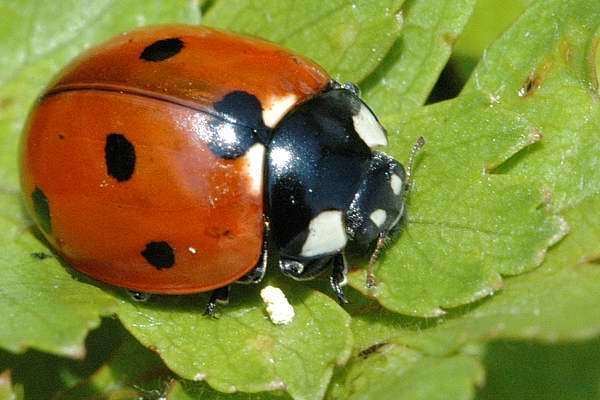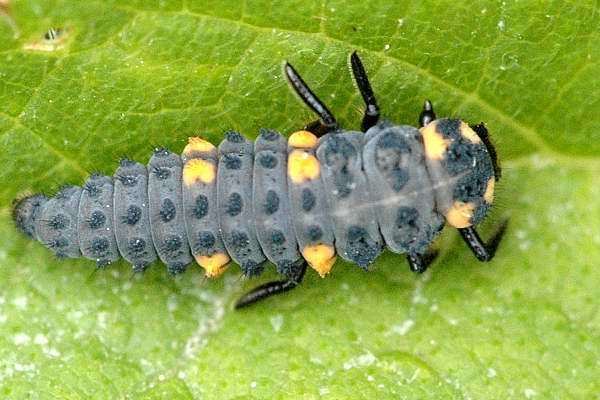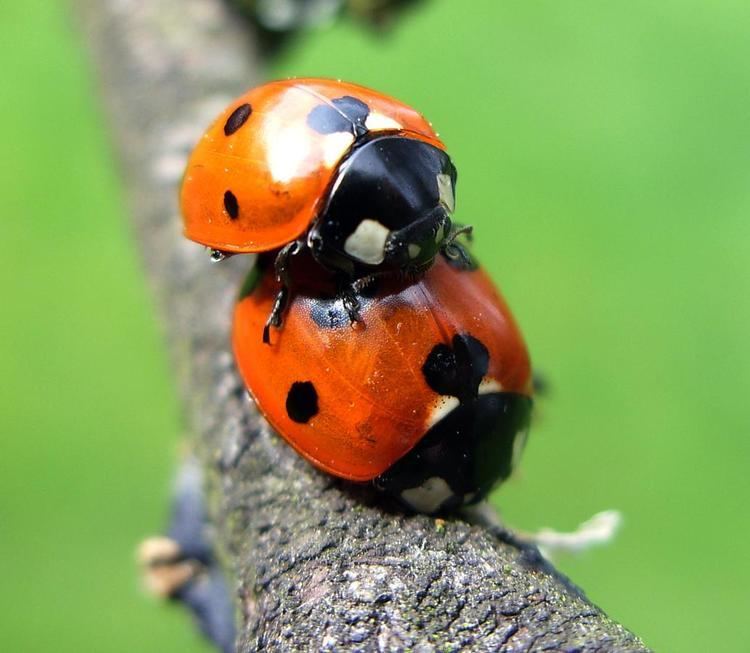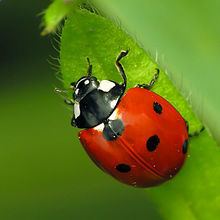Rank Species | Higher classification Coccinella | |
 | ||
Similar Ladybird, Insect, Beetle, Harlequin Ladybird, Coccinella | ||
Coccinella septempunctata larva munching aphids pristurus
Coccinella septempunctata, the seven-spot ladybird (or, in North America, seven-spotted ladybug or "C-7"), is the most common ladybird in Europe. Its elytra are of a red colour, but punctuated with three black spots each, with one further spot being spread over the junction of the two, making a total of seven spots, from which the species derives both its common and scientific names (from the Latin septem = "seven" and punctus = "spot").
Contents
Biology

C. septempunctata has a broad ecological range, generally living where there are aphids for it to eat. Both the adults and the larvae are voracious predators of aphids, and because of this, C. septempunctata has been repeatedly introduced to North America as a biological control agent to reduce aphid numbers, and is now established in North America, and has been subsequently designated the official state insect of five different states (Delaware, Massachusetts, New Hampshire, Ohio, and Tennessee).

In the United Kingdom, there are fears that the seven-spot ladybird is being outcompeted for food by the harlequin ladybird. Conversely, in North America, this species has outcompeted many native species, including other Coccinella. Massive swarms of C. punctata took place in the drought summer of 1976 in the UK. It used to be a common on the island of Malta, but over the years it has declined in numbers.
Anatomy and physiology

An adult seven-spot ladybird may reach a body length of 7.6–10.0 mm (0.3–0.4 in). Their distinctive spots and attractive colours apparently make them unappealing to predators. The species can secrete a fluid from joints in their legs which gives them a foul taste. A threatened ladybird may both play dead and secrete the unappetising substance to protect itself. The seven-spot ladybird synthesizes the toxic alkaloids, N-oxide coccinelline and its free base precoccinelline; depending on sex and diet, the spot size and coloration can provide some indication of how toxic the individual bug is to potential predators.

